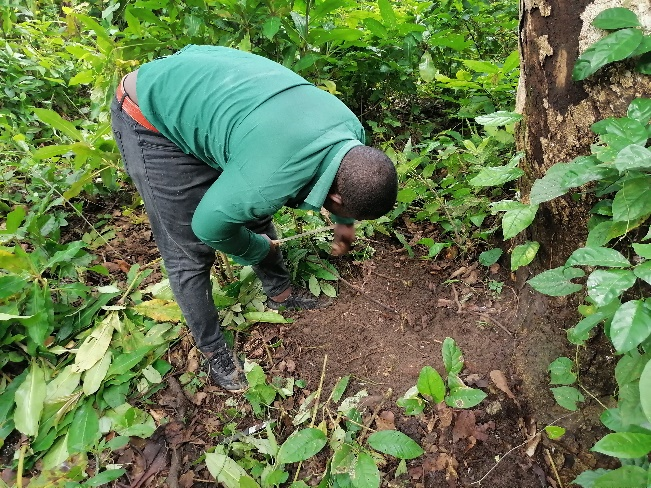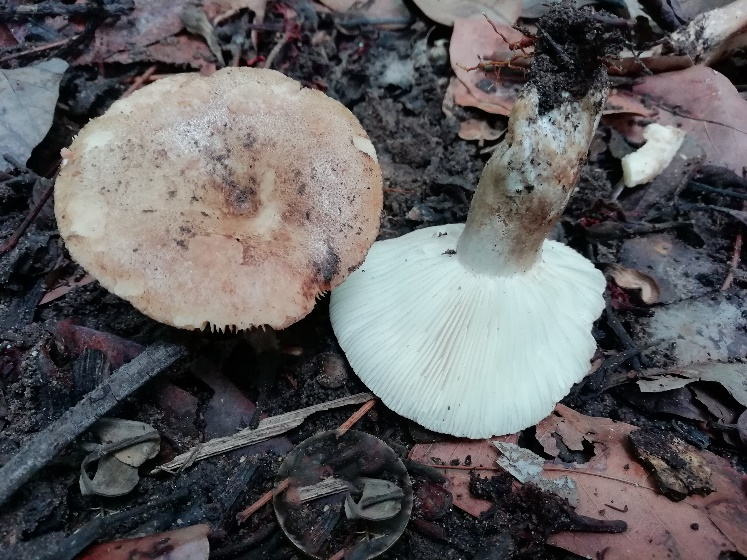Projects
Reintroduction of reportedly extinct stinking milk-cap mushroom in northern Benin through sapling plantations and community outreach

Habitat suitability modelling
Habitat suitability modelling for rediscovering the endemic and endangered stinking milk-cap mushroom, reportedly extinct in its occurrence area in Benin
Habitat safegarding and community outreach promoting the conservation of the critically endangered Brown-capped mushroom in Benin (West Africa).
Russula cellulata Buyck is an ectomycorrhizal fungus that plays an important ecological and socio-economic role for rural populations in Africa. The species lives in association with many ectomycorrhizal trees whose growth and mineral nutrition it improves. Socially, it is an important source of food and income for rural populations and has even been cited as the most known and harvested Russula for food in the Zambezian region (Buyck, 1994). In Benin, Russula cellulata has been recorded only in the Wari-Maro Forest Reserve (Yorou et al., 2001) and the forest galleries of Bassila.

Habitat suitability modelling
Conservation of a rare, endemic and critically endangered stinking milk-cap mushroom confined to the Bassila gallery forest in Northern Benin
Forest ecosystems have globally decreased due to forest management and other anthropogenic activities (FAO 2010). In Africa, the population explosion and rapid urbanisation are major threats to forest degradation, as they increase the dependence of the population on Non-Timber Forest Products and wood resources (Bâ et al., 2012; Diagne et al., 2013).
Combining Local Ecological Knowledge with Scientific Data to Strengthen Conservation Strategies of Wild Fungi in Northern Benin
The socio-economic importance of fungi (sources of food, medicine, and income) for rural populations in Benin and their numerous ecological functionalities (saprotrophic, symbiotic, parasitic, and mutualist) has long sparked interest in studying their taxonomic diversity and productivity (Yorou et al., 2017). However, the application of this knowledge to achieve better species conservation and prevent extinction has only recently begun. Such a situation contributes to fungal vulnerability by limiting our ability to inform policy on what threatens them, how these changes over time, and which habitats are most at risk. To help in solving this problem, Yorou & De kesel (2011) proposed a red-list of fungi for Benin to inform the public and decision-makers about the silent disappearance of fungi.

Documenting the Diversity of Macrofungi and Local Knowledge for Sustainable Conservation of Fragmented Swamp Forest of Lokoli in Southern Benin
Fungi are ubiquitous and, unlike other organisms like plants and animals, knowledge on fungal diversity and conservation is lagging behind although fungi are the second most diverse group of organisms (Purvis and Hector 2000). They play key roles in ecosystems (Schmit and Mueller 2007) and can directly improve livelihoods through economic, nutritional and medicinal contributions. In Benin, the diversity of fungi is roughly estimated at 16,842 species; to date, only 432 species i.e., 2,6% are known (Piepenbring et al. 2020).

Habitat suitability modelling
Combining Local Ecological Knowledge with Scientific Data to Strengthen Conservation Strategies of Wild Fungi in Northern Benin
The socio-economic importance of fungi (sources of food, medicine, and income) for rural populations in Benin and their numerous ecological functionalities (saprotrophic, symbiotic, parasitic, and mutualist) has long sparked interest in studying their taxonomic diversity and productivity (Yorou et al., 2017). However, the application of this knowledge to achieve better species conservation and prevent extinction has only recently begun.
Sensitization of local populations on the ecosystem services of dead wood and the definition of sustainable dead wood extraction strategies in the Toui-Kilibo classified forest (project ID. R.3.4-29/2022/160)
Dead wood, an integral part of forest ecosystems, is the habitat of many living organisms. It helps to maintain soil fertility by recycling carbon, and is also an important source of energy for rural populations. However, uncontrolled extraction and the intensification of forest management are leading to a significant reduction in this resource and, consequently, to the loss of the biodiversity associated with it. This situation is all the more critical in Benin, where the ecological importance of dead wood is little known to the public.
